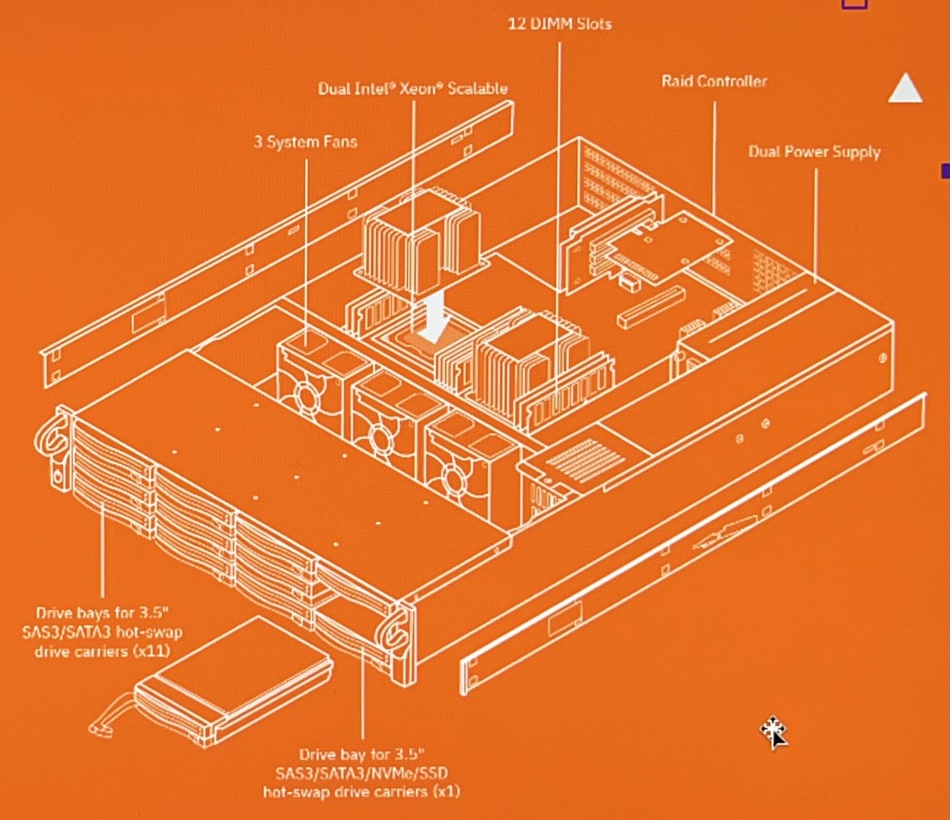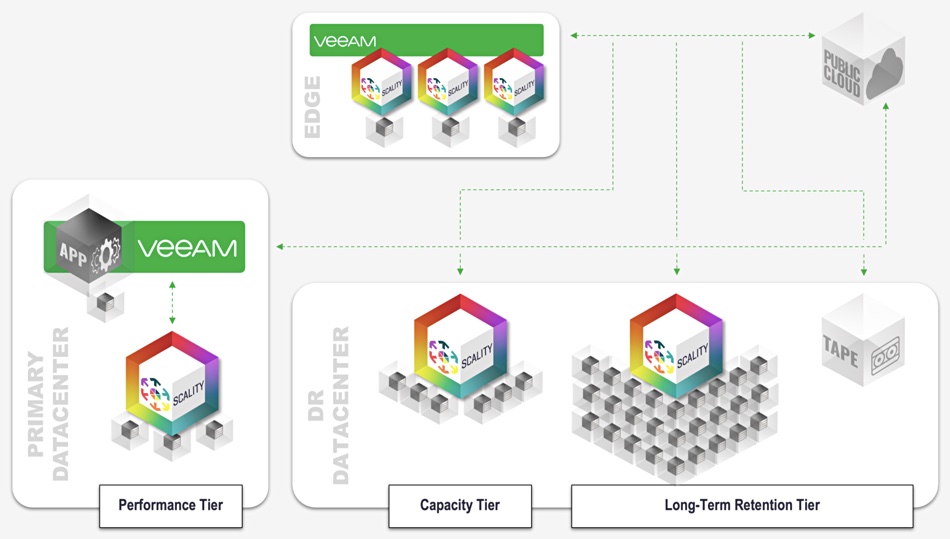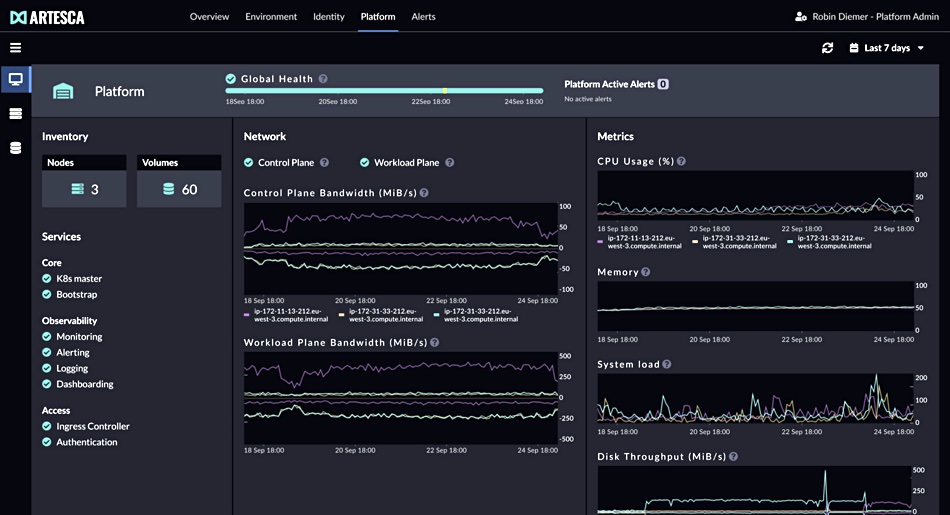Cloudian, Object First, Pure Storage and Scality are the four initial object storage targets for version 12 of Veeam Backup and Recovery, which has added the ability to back up directly to object storage on-premises.
Update. Footnote added about Veeam Ready – Object with Immutability partner category; 15 Feb 2023. Note added about VAST Data support of Veeam’s direct write to object feature, and SOSAPI; 18 Feb 2023. Dell note added; 20 Feb 2023. Zadara note added 21 Feb 2023.
These four object storage systems are alternatives to purpose-built backup appliances (PBBA) – such as Dell’s PowerProtect, HPE StoreOnce, Quantum DXi and the ExaGrid scale-out system. Scality points out that these are offered as a range of single or dual-headed (HA) appliances with integrated deduplication and compression. They typically come with claims of very high data reduction ratios. But backup software products now do the compress/dedupe functionality in nearly all cases, so the benefits of this have become generally universal to all storage.
We understand there some caveats with Veeam’s direct to object storage. You can’t mix object and non-object storage and you can’t mix object storage platforms – such as AWS, Azure, and Google GCS in the public cloud, and Cloudian, Object First, Pure Storage and Scality in the on-premises world. We also understand that you can go straight from the performance object tier to the long-term retention (archive) tier without passing through an intermediate capacity tier.
Cloudian
Cloudian says its HyperStore used as a direct-to-object repository removes the need for a primary, file-based backup tier and its associated costs, and enables immutability straight away, via S3 Object Lock. It says that using HyperStore in this way can save up to 70 percent when compared to a public cloud backup storage alternative.
Larry Meese, VP of products and solutions at Cloudian, issued an announcement statement: “By eliminating the intermediate staging layer required for other solutions, the Veeam Data Platform and Cloudian solution simplifies the workflow, accelerates backup to a ransomware-protected platform, and reduces the overall storage cost.”
Veeam customers can use v12’s Smart Object Storage API (SOSAPI) to access HyperStore usage metrics from within the Veeam console to manage and plan their capacity utilization better.
If you want to learn more, you could register for a joint Cloudian/Veeam webinar at cloudian.com/veeam12.
Object First
Object First, the startup founded by Veeam’s own now retired founders, has launched its Ootbi (we think it stands for Out of the box integration) appliance specifically designed to provide object storage for Veeam backups, saying it delivers simple, powerful, and affordable backup storage which can be racked, stacked, and powered in 15 minutes. Ootbi provides ingest speeds up to 4GB/sec and restore speeds up to 600MB/sec, for as little as $11TB/month and is now generally available.
David Bennett, CEO at Object First, said: “We have a vision for a backup appliance that ransomware proofs Veeam backups with out-of-the-box immutability without sacrificing performance and simplicity to meet budget constraints.”

The Ootbi appliance is powered by 2x Intel Xeon Silver 4215R @3.2GHz CPUs and has 128TB usable capacity, scaling to 0.5PB with four nodes. A node supports 11x 16TB SAS HDD, 2x 240GB SATA SSD for the OS, and a single high performance Intel DC P4610 1.6TB NVMe SSD for an ingest cache.
All communication between Ootbi and Veeam is handled via S3 integrating to Veeam’s SOSAPI. Veeam manages all writing/reading of backup data. Ootbi will block further writes of data until the immutability period for the entire backup chain has ended, just in the case the storage is full.
We asked Object First a few questions about Ootbi.
Blocks & Files: Why should a customer buy this instead of Dell’s PowerProtect or the ExaGrid appliance?
Object First: Ootbi provides instantly immutable, simpler, and purpose-built experience that costs roughly the same amount as a cloud subscription. Veeam admins will find that Ootbi makes managing Veeam primary storage something they don’t have to think about anymore.
Blocks & Files: Why should a customer buy this instead of Pure’s FlashBlade?
Object First: Ootbi provides a powerful and fast backup solution, without an expensive, complex learning curve. Due to our optimized usage of NVMe cache, Ootbi can achieve near-flash speeds for backup. A single node delivers ingest speeds at 1GB/sec, whereas a full four-node cluster can ingest at 4GB/sec.
Blocks & Files: Can it tier to the cloud?
Object First: Ootbi is a simple-to-integrate on-prem object storage box built to offer primary storage speeds with security at the forefront. We have encouraged potential customers to continue the best practice of 3-2-1 (three copies of data, two different media types, one offsite copy) and not just rely on a single storage target. While they can use Ootbi as primary or secondary storage, we encourage off-siting and ensuring multiple copies of backups are always kept. The Veeam admin can choose to set up a scale-out backup repository and tier their data wherever they please.
Blocks & Files: Who wrote the object storage software?
Object First: Modern software development is very different than before. With a fully agile process, no longer can full code attribution be allocated to a single R&D developer – rather a team of developers. And in Object First’s case, it was our own R&D team that created the S3 Object storage architecture.
Pure Storage
All-flash array supplier Pure Storage supports Veeam’s direct-to-object storage capabilities. A Pure Storage blog we saw before publication says: “Providing capabilities for all workloads, we provide greater cyber security protection and operational efficiencies that allow you to protect more and recover faster in the face of disaster or cyber attack. … The release of Veeam v12 brings Direct to Object support that enables Veeam to leverage the parallelism of the all-flash scale-out architecture of FlashBlade//S.”
As an additional use case, Pure’s blog says: “Veeam Backup & Replication provides availability for data and applications by backing up file data from native FlashArray storage snapshots, making FlashArray//C an ideal choice to keep snapshots for long-term storage. Just configure FlashArray//C as a secondary repository for redundancy or create policies for different retention times and configure Veeam to copy backups from FlashArray//X to FlashArray//C for increased fault tolerance and enterprise scalability.”
A Pure Plug-In for Veeam (USAPI), released in 2018, helps lower RPOs by allowing Pure FlashArray customers to automate snapshots and backups. The later USAPI 2.0 plug-in for Veeam (downloadable from Veeam’s website) allows snapshots and replicas to be managed, cataloged, and backed up to FlashArray//X, FlashArray//C, or Pure Cloud Block Store. USAPI 2.0 also enhances enterprise scalability and offsite resiliency by replicating snapshots from FlashArray//X or FlashArray//XL to FlashArray//C, giving Pure customers the ability to deploy Backup & Replication v12 into more complex environments.
The emphasis here seems to lie in using Veeam in the Pure environment – not so much using FlashBlade// as a target for Veeam backups of non-Pure systems. David Harvey, VP of solutions and alliances at Pure, provided a statement supporting this notion: “Together, with the expanded integration for USAPI and Veeam Direct to Object, Veeam and Pure Storage are enabling joint customers to benefit from unmatched disaster recovery performance, granularity and simplicity, and ultimately empowering these organizations to strengthen their cyber resilience in today’s complex and dynamic business environment.”
Scality
Scality says its collaboration with Veeam for its RING software provides ransomware protection, data immutability and operational efficiencies without sacrificing flexibility or performance. It plays the immutability card by saying that, according to a recent Veeam report, 94 percent of ransomware attacks now target backups, and at least some repositories are impacted in 68 percent of cyber events. Having an immutable object storage vault in the backup front line is a way to counter this.
It also says it helps with the golden 3-2-1 backup rule, because Scality provides a three-tier architecture. It has a performance tier, a capacity tier and a long-term retention tier, as a diagram illustrates:

The performance tier is in the primary datacenter, the capacity and long-term retention tiers in a disaster recovery datacenter (thus off-site), and tape is the second media type after disk, or third after flash and then disk.
Scality CMO Paul Speciale said: “Veeam is pushing the envelope to make backups incredibly simple, fast and reliable for customers. … We help customers further simplify backup management with a single-vendor backup storage solution that complies with Veeam’s recommended architecture and offers unbreakable immutability at each backup tier.”

Scality claims it has lightning-fast performance with 100 percent uptime that is 4x to 8x faster than competing solutions– 80TB/hour backup & restore; and always-on SLA.
We asked for the justification for this claim over competing systems and a Scality spokesperson told us: “Backup appliance vendors and Dell EMC Data Domain specifically quote peak throughput numbers in the range of 20 to 30 TB/hour for their largest and most expensive configurations. However since dedupe/compression are done on the appliance, this has a negative performance impact (degradation).
“Specifically, restore performance is impacted by the overhead of rehydrating/reassembling deduped data on the appliance – so in the real world this means up to 75 percent lower restore throughput versus the stated performance. Therefore, the effective restore performance of the top models is more commonly in the range of 8 to 12 TB/hour for the larger models. Since Scality does not have issues with performance of restores, this gives our solutions a significant (4x to 8x) performance advantage and especially for critical restore operations.”
Scality also suggests that: “Backup appliance vendors use high data reduction ratios as the justification to keep the raw capacity costs of these appliances much (up to 10x!) higher than non-specialized data storage, since they argue that the ‘real effective cost’ is 5, 10, and even 20x lower per TB depending on data reduction. So net/net even in single or dual headed form, these are expensive solutions often end up as more costly than object storage in clustered form even after data reduction.”
It claims it optimizes Veeam capacity requirements for Microsoft 365 and can reduce capacity requirements for backup by 50 percent.
Comment
We anticipate that all S3-compatible object storage vendors will support Veeam Backup and Recovery v12, meaning MinIO and NetApp’s StorageGRID for example. (In fact, MinIO has done so as a blog, claiming a 12GB/sec ingest speed, describes.) It’s also likely that other backup software providers will follow Veeam’s lead and offer a direct-to-object storage backup facility as well.
What is not clear is how this will affect the PBBA market. We could say that every object storage system purchased as a Veeam backup target is a lost PBBA sale and that, therefore, the PBBA market will be smaller after a year of VBR v12 object target system sales than it would otherwise have been.
We might even see some PBBA supplier product exits or switch to object storage technology instead.
Bootnote
Veeam has a partner classification; Veeam Ready – Object with Immutability, which has been around for some years and has applied to the capacity and long-term retentions tiers in its 3-tier architecture; not the performance tier in other words. As of now there are some 30 partner systems in that category.

VAST Data has just told us (Feb 14) that “VAST has just announced its latest partnership with Veeam to help eliminate cyberattack downtime. The new partnership sees VAST’s Universal Storage verified for ‘Veeam-Ready Object with Immutability’ as well as support for Veeam’s latest version of its Data Platform”
But that does not mean that VAST Data actually supports VBR v12’s SOSAPI and direct write to object storage for its performance tier. We have asked VAST this and its response was: “Yes, we support direct to object. SOSAPI solves object storage capacity utilization challenges that don’t exist with Universal Storage. With Universal Storage there are no bucket size limits and the system load balances itself across the cluster. Therefore, VAST does not support SOSAPI but we will continue to review as additional functionality is added to the platform.”
This Veeam partner category has not been updated to reflect VBR v12’s direct write to object storage and SOSAPI capability.
Bootnote 2 – Dell
Dell told us that Dell ECS is already “Veeam Ready” validated as object storage with immutability (for capacity and L/T retention tiers). It has GA Veeam 12 code in the lab and everything is running as expected. Dell ECS will be Veeam Ready V12 once V12 GA’s and Veeam formally launches its Veeam Ready V12 program. Dell ECS can be used as direct-to-object target by VBR v12. Regarding SOSAPI, Dell ECS does its own storage balancing which makes the SOSAPI unnecessary.
Bootnote 3 – Zadara
Zadara told us: “Zadara supports Veeam Data Platform v12 including Direct-to-Object Storage. As a multi-tenant Object Storage provider Zadara manages the capacity across all tenants in a holistic manner. SOSAPI solves for object storage capacity utilization challenges that do not exist with a fully-managed storage-as-a-service solution. As such, Zadara does not support it at this time. We are continuously adding new features and functionality to the Zadara Edge Cloud Platform, including Zadara Object Storage, and will continue to work with Veeam to offer the best solutions to our partners and customers.”








